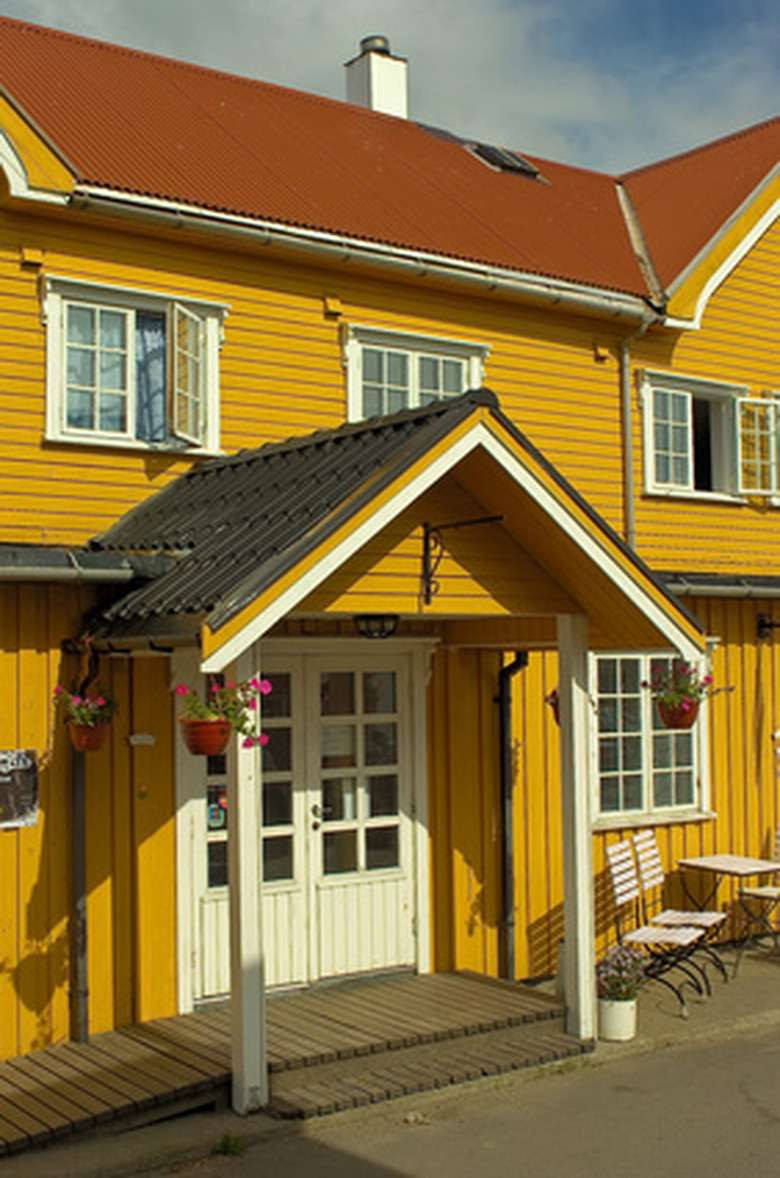Plants Used In A Scandinavian Garden
Physically removed from continental European garden influences, Scandanavian gardens enjoyed more formal, ornate development in Denmark and southernmost Sweden, according to "Scandinavian Garden Design." The flatter landscape permitted larger gardens with formal areas, while more northerly wilderness areas focused more upon woodland plant gems. Regardless, choose plants with ties to any of the nations of Scandinavia in lore, food, official emblems, symbolism or national flag colors.
Trees
You cannot deny the boreal native vegetation, climate and landscapes of Sweden, Norway, Denmark and Finland. Choose trees that reinforce that northerly "feel." Pine, spruce, and fir make sound choices for their evergreen structure and windbreak qualities as well as their beauty in winter snow. Birch trees also make excellent ornamental trees in a Nordic design. Fruit trees like apples, pears and apricots add a culinary and practical feel to the garden as well as provide spring flower color after the traditionally long, dark and cold Scandinavian winter. Crab apples and hawthorns are also small flowering trees that provide shade in summer.
- Physically removed from continental European garden influences, Scandanavian gardens enjoyed more formal, ornate development in Denmark and southernmost Sweden, according to "Scandinavian Garden Design."
- Pine, spruce, and fir make sound choices for their evergreen structure and windbreak qualities as well as their beauty in winter snow.
Shrubs
Cold-hardiness is a key feature for plants grown in Scandinavia. Grow privet for formal hedges and enjoy lilac for floral fragrance and ease of culture. Lingonberry, a relative of cranberry and blueberry, is revered for the fruits that make Scandinavian jam or syrup of renown. If soil and climate allow, grow any rose that blooms in a color of a Nordic nation's flag, especially yellow, red or white.
Perennials
While any cold-hardy perennial grown in continental northern Europe would translate nicely into a Scandinavian garden setting–such as pinks, columbine, peony and delphinium–a few in particular would resonate with Finns, Danes or Norwegians. Red clover, saxifrage and lily of the valley should be grown if the soil and climate allows. Other flowering meadow or woodland perennials especially nice for Nordic gardens include primrose, bloodroot, woodland lady slipper orchid, globe flower, twinflower, heath, and foxglove. In moist areas, try astilbe and monkshood.
- Cold-hardiness is a key feature for plants grown in Scandinavia.
- Red clover, saxifrage and lily of the valley should be grown if the soil and climate allows.
Annuals
The cool to comfortably warm summers of Scandinavia enjoy long days. Such conditions allow a wealth of annual herbs and flowers to grow vigorously and without much decline. Vegetable crops may be grown in formal rows, but flowering annuals like petunia, nasturtium, verbena, annual phlox, geranium and million bells perform magnificently until frost. Choose crisp, bright color combinations for window boxes or patio containers or mimic the colors of any of the Nordic countries' flags. Danish gardens would look patriotic in red and white and Finns blue and white, while Swedes love sky blue and yellow. Norway's colors are red, white and dark blue.
References
- "The Scandinavian Garden"; Karl-Dietrich Buhler; 2000
- Nordic Well Being: A Scandinavian Garden: Is There Any Such Thing?
